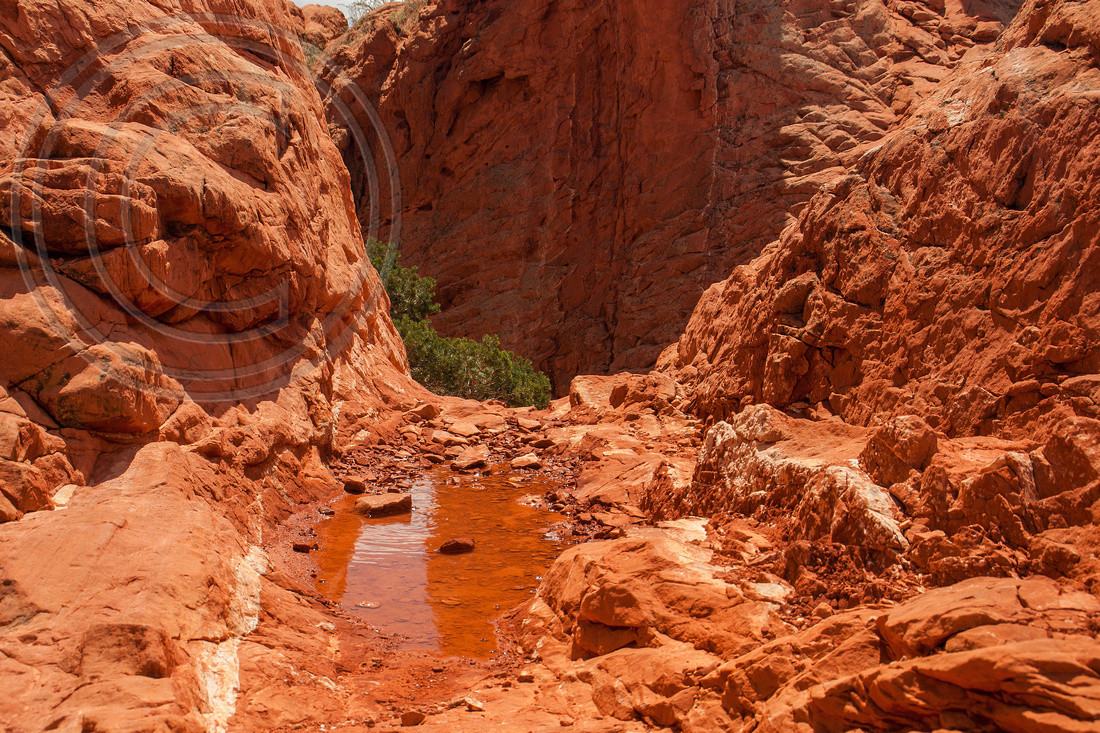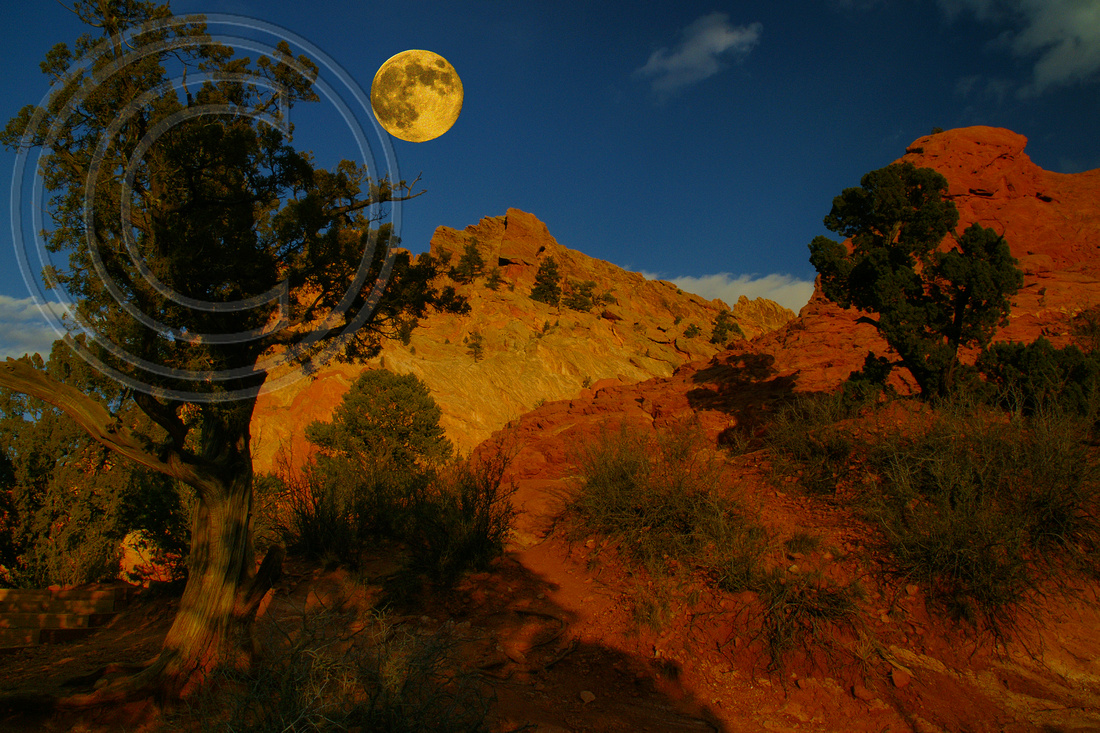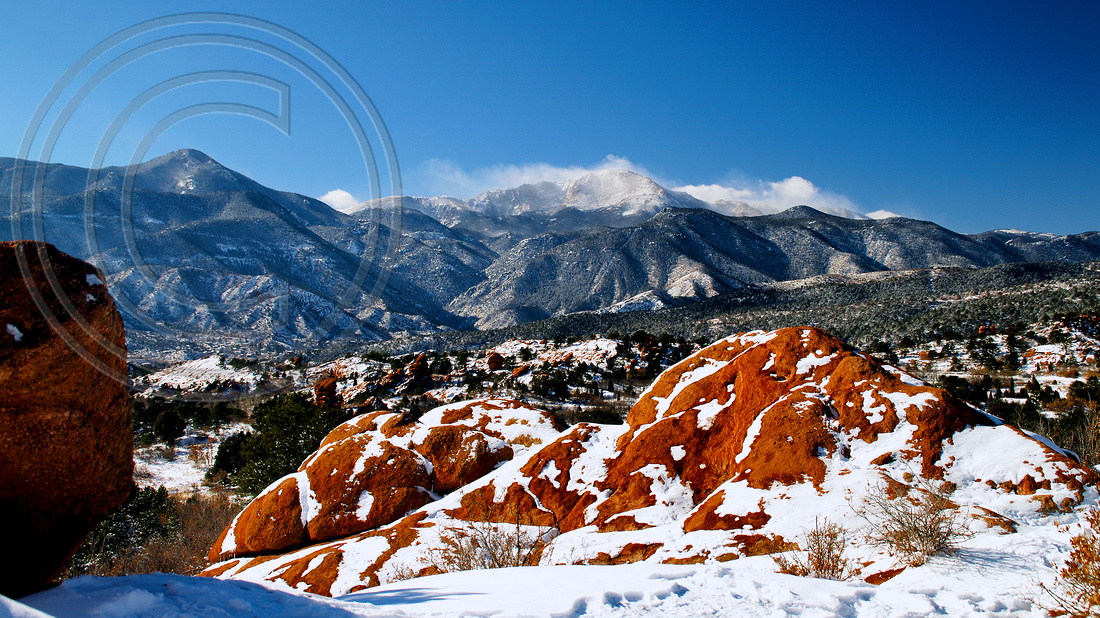Featured Foto with Facts
Scroll from oldest to newest entry
22 April 2012

After the Rain in Garden of the Gods
I almost always use a circular polarizing filter when shooting landscapes during daylight hours. In fact, one is always on my lens and in the darker hours or when I am doing indoor photography I sometimes forget to remove it. To me it serves many purposes including to protect my lens from dust, scratches and water spray. But, photographically, it has many functions among which are the ability of a polarizer to darken blue skies and increase the contrast between the clouds and the sky, to allow a slower shutter speed and capture a "cotton candy" effect on waterfalls (neutral density filters can even do this better and those can be combined with a polarizer), to decrease the glare on wet leaves and other objects and, as in this picture, to see through much of the glare on a shallow body of water in order to visualize the rocks below the surface. That last point can come in handy when, for example, one is imaging a wide angle landscape from a low vantage point near a mountain lake shoreline with peaks in the distance, a so called "CUWA" (Close Up Wide Angle) photograph.
To outdoor photographers a polarizer is an essential piece of equipment that is relatively inexpensive and which will enhance the quality of one's photographs beyond that which post-process editing can do.
As you look through some of my galleries (such as Colorado Landscapes, Hayden Falls Park and Indian Run Falls Park) see if you can identify where the polarizer made a difference in the image and try to visualize how it would have appeared without the use of that filter. There are examples of all four uses that I stated above in those galleries!
The above photograph can be found in my "Colorado Landscapes" gallery and is best viewed in full screen. As always, any comments are appreciated. Feel free to use the blog in this website to do so.
TECHNICAL DATA FOR THOSE WHO ARE INTERESTED
CAMERA: Sony DSLR A-700
LENS: Sony DT 18-200 mm F3.5-6.3 Zoom
Aperture Priority Mode at 1/50 sec, F10, ISO 100
Focal Length of 35 (52 equilavent) mm
Tristar Circular Polarizing Filter
Processed in Adobe Lightroom 4 and Adobe Photoshop CS5.1
_________________________________________________________________________________________________________________
__________________________________________________________________________________________________________________________________________________________________________
24 May 2012


Moonrise and Sunset Over Garden of the Gods
Most landscape photographers will do their best work and make their best images during the "golden hours" of the day. Loosly defined the golden hours are approximately the 30 minutes before and after sunrise and sunset. When the sun is low in the sky it casts a different color "temperature" of light and at these times that temperature is "warmer" in color so the resultant image will take on a more golden glow. These warmer temperatures lend a more serene mood to the photograph. Also, the early morning and evening low horizon sun casts longer shadows and brings out more detail and textures than does the midday sun. Additionally, warm lighting is the mainstay of portrait photographers and that can be accomplished indoors (and occasionally outdoors) with artificial lighting, colored reflectors and diffusers and warming filters. "Cooler" color temperatures will cast a bluish shade which can be more harsh but also is often preferred in scenes that depict blue skies and white clouds against snow-capped mountains. This is often seen in classic calendar and post card pictures, probably because it is under those conditions (daytime) that most people visit these scenic areas.
The above photograph, Moonrise and Sunset Over Garden of the Gods, was taken in the evening during the golden hour. The rock formation in the center background is more of a chalk-white color but note the golden tone that the setting sun casts on it. The sandstone rocks on the right of the scene are red but with the warm color temperature they take on an orange-red hue. This photo can be found in my "Sunrises, Sunsets and Moons" gallery. I prefer to photograph most of the rock formations in Garden of the Gods during the evening golden hour as many of them are best seen from the west (camera facing east) and the setting sun will give them the glow that I am seeking.
In the image below, Pikes Peak on New Year's Day, you will note a more bluish or "cooler" tone to the picture. I photographed this scene at almost high noon. The mood of this photograph is not near as calm as that of the evening one above. However, shadows and texture are maintained because of the winter southern position of the sun in the sky as the camera faced west. This image can be found in my "Colorado Landscapes" gallery.


Pikes Peak on New Year's Day
In future "Featured Foto with Facts" I hope to discuss some other lighting situations such as post-sunset and pre-sunrise aspects of the golden hours, fill-flash and more on how filters can help control high contrast scenes.
TECHNICAL DATA FOR THOSE WHO ARE INTERESTED
_______________________________________________________________________________________
Moonrise and Sunset Over Garden of the Gods Pikes Peak on New Years Day
CAMERA: Sony DSLR A-700 CAMERA: Sony DSLR A-700
LENS: Sony DT 18-200 mm F3.5-6.3 Zoom LENS: Sony DT 18-200 mm F3.5-6.3 Zoom
Aperature Priority Mode at 1/60 sec, F22, ISO 200 Aperature Priority Mode at 1/320 sec, F6.3, ISO 125
Focal Length 18 (27 eqivalent) mm Focal Length 20 (30 equivalent) mm
Tristar Circular Polarizing Filter Tristar Circular Polarizing Filter
Fill Flash Ledvon Tripod
Post Processing in Adobe Photoshop CS5.1 to include Post Processing in Adobe Photoshop CS5.1
insertion of the full moon